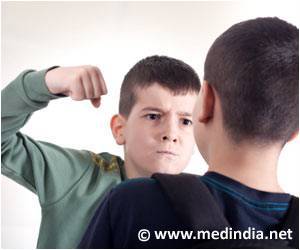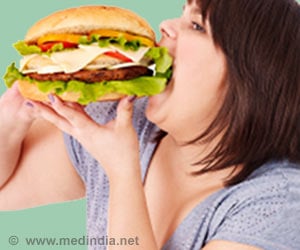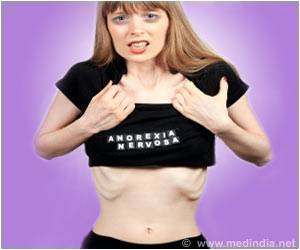A neurosecretory hormone called ghrelin is increased due to the visual stimulation caused by food images, influencing food intake.

- Ghrelin is a gastric hormone, which influences food intake.
- Ghrelin levels may induce appetite through the vagus nerve throughout the blood-brain barrier to the central nervous system.
- Exposure to good food images will lead to increased hunger and food consumption.
In addition to this, the impact of peripheral hormones that signal nutrition status to the mesolimbic areas, particularly, “Ghrelin” (the only known circulating orexigenic hormone) has come into focus.
Ghrelin:
It is the gastric hormone peptide renowned to influence feeding. It is the major signal for food intake in various species including human beings. It was identified as an endogenous ligand of the Growth Hormone (GH) secretagogue receptor. The hormone has been isolated from the stomach as well as the hypothalamus regions. Ghrelin not only plays an important role in energy balance, but also stimulates the release of GH, adrenocorticotropic hormone (ACTH) and cortisol in human beings. In humans, ghrelin stimulates appetite and calorie intake. Ghrelin levels are found to be elevated before meals and decreased after food intake.
A single intravenous bolus of the hormone given to an individual stimulates hunger and influences to have a large meal. Ghrelin administration increases calorie intake, appetite and also prompts the imagination of a favourite or tasty food.
Leptin and Insulin:
Ghrelin Stimulates Appetite:
In a study conducted by the department of psychiatry and psychotherapy, Technische Universität Dresden, Germany, the processing of pictures showing food were investigated after overnight fasting using functional MRI and correlated it with blood plasma levels of ghrelin.
The volunteers were made to view images of food and their appetites were rated. It was found that fasting levels of Ghrelin correlated positively with food cue reactivity and was noted that high fasting Ghrelin levels were associated with subjective appetite during the task.
The study concluded that brain activation and subjective appetite ratings indicate that ghrelin elevates the hedonic effects of food pictures. Fasting levels of ghrelin may generally cause craving when they are exposed to food cues.
In another study conducted by the department of psychiatry, Max Planck Institute of Psychiatry, Munich, ghrelin was isolated from the stomach and hypothalamus of rats and human beings. It was investigated if the injection of the hormone affected human eating behavior. They injected 100 mg ghrelin in young control subjects and found that the appetite was enhanced. More so, it stimulated an increase in plasma levels of GH instantly. The results revealed that Ghrelin stimulated appetite and images of food.
Ghrelin Levels Increase After Seeing Pictures of Food:
While Ghrelin administration seemed to increase appetite, calorie intake and picturization of favorite food, it was unclear as to whether the hormone’s levels would be affected by external cues like the sight of food.
Environmental factors like the visual exposure to food have been claimed to influence eating habits in human beings. The sight of hedonic food enhances the desire to eat even when they feel full or satiated. There was no clarity as to which physiological mechanism triggers the motivation for food intake independent of the metabolic energy status. It was thus essential to test the hypothesis that ghrelin levels increase in healthy volunteers after visual presentation of images of food.
The Effect of Visual Presentation of Images of Food on Ghrelin Plasma Levels in Healthy Subjects:
A study conducted by Max Planck Institute of psychiatry, Germany has investigated the influence of images of food on ghrelin levels in young subjects. Their study lasted two consecutive sessions with a one-week interval.
Endocrine measurement: During each session, blood samples were collected and then plasma concentration of ghrelin were analyzed. Plasma total ghrelin was measured using commercial radio-immunoassays.
Visual presentations: During the first session, they showed 50 non-food images and during the next session, images of food were showed on a computer screen. The images of food demonstrated savory and sweet meals which were typical for a German lunch like pizza, steak, ice cream, chocolate cake and Viennese schnitzel pizza. The non-food images comprised of various sceneries and objects that did not involve any context of eating behavior such as clouded sky, piano, bicycle, pair of shoes.
The images were presented to the subjects in a randomized order for a total duration of 15 minutes. Each picture was shown thrice averagely for six seconds. The experiment was carried out in a quiet room and the subjects were seated in a comfortable armchair. They were video monitored to not fall asleep.
Major Findings:
Visual representation of food resulted in a significant increase of ghrelin. As expected, ghrelin levels increased before each meal independent of the contents of the pictures. In addition to that, it was found that ghrelin levels increased significantly over the 30-minute interval following the exposure to images of food, compared to that of the interval following the exposure to non-food images. There was a significant difference in the increases between the exposures to the two different picture conditions.
It was concluded that the sight of food images elevates ghrelin levels in healthy subjects. The increase in ghrelin was related to the visual stimulus and wasn’t induced by an internal cue like a conditioned time schedule for food consumption or pre-existing feeling of hunger. They were shown five pictures and asked to recognize if they had seen the picture before. But they did not find any significant correlation between the results of the recognition test and that of the increase in ghrelin hormone. They were also asked to rate the taste of food images which also did not seem to correlate with plasma ghrelin levels.
There is now strong evidence that ghrelin produced majorly in the stomach region induces its orexigenic effects through the vagus nerve and the brainstem to the hypothalamus. The elevated ghrelin levels may induce appetite through the vagus nerve throughout the blood-brain barrier to the central nervous system. The study confirms that the strongest ever orexigenic hormone, ghrelin was induced by perception of images with food.
This finding supports the hypothesis that external factors contribute to eating behaviour in modern society where the visual representation of food products is very common. This study has revealed that exposure to images of food will lead to exceeded food consumption and Hedonic hunger (Eating driven by pleasure, instead of the need for calories).
In the future, it is likely that nutritionists and dietitians will start advising people to refrain from viewing images of food to prevent hedonic hunger and overeating.
References:
- Schüssler P1, Kluge M, Yassouridis A, Dresler M, Uhr M, Steiger A. Ghrelin levels increase after pictures showing food. Obesity (Silver Spring). 2012 Jun;20:1212-7. doi: 10.1038/oby.2011.385. Epub 2012 Jan 12
- Skibicka KP1, Dickson SL.Ghrelin and food reward: the story of potential underlying substrates. Peptides. 2011 Nov:2265-73. doi: 10.1016/j.peptides.2011.05.016. Epub 2011 May 19.
- Schmid DA1, Held K, Ising M, Uhr M, Weikel JC, Steiger A. Ghrelin stimulates appetite, imagination of food, GH, ACTH, and cortisol, but does not affect leptin in normal controls. Neuropsychopharmacology. 2005 Jun;:1187-92
- Kroemer NB1, Krebs L, Kobiella A, Grimm O, Pilhatsch M, Bidlingmaier M, Zimmermann US, Smolka MN. Fasting levels of ghrelin covary with the brain response to food pictures. Addict Biol. 2013 Sep:855-62. doi: 10.1111/j.1369-1600.2012.00489.x. Epub 2012 Sep 13.
Source-Medindia















